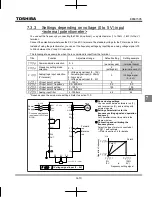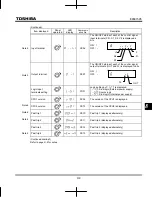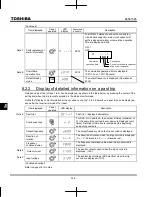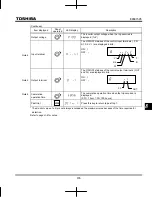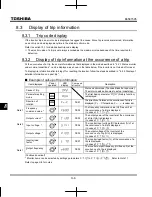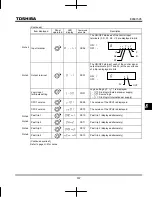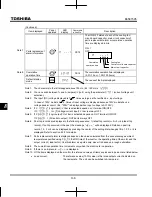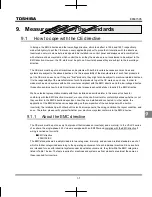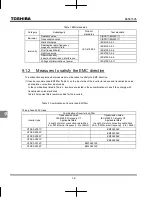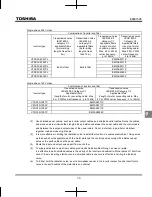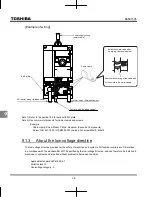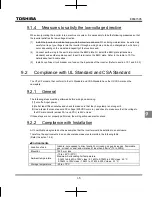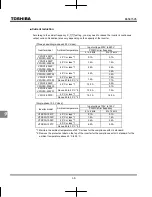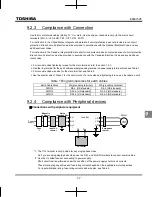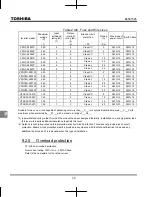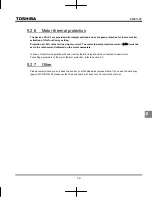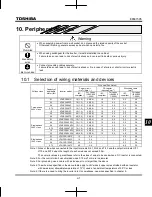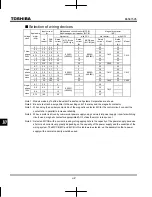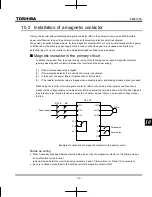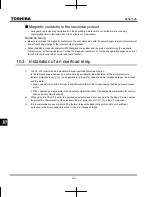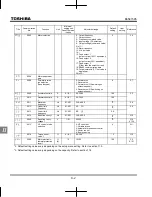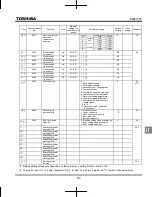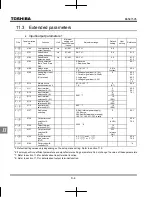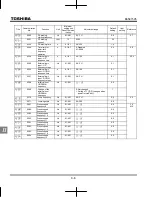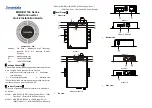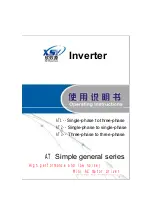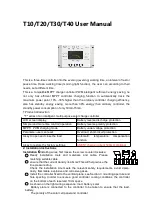
E6581595
I-5
9
9.1.4
Measures to satisfy the low-voltage directive
When incorporating the inverter into a machine or system, it is necessary to take the following measures so that
the inverter satisfies the low-voltage directive.
(1) Install the inverter in a cabinet and ground the inverter enclosure. When doing maintenance, be extremely
careful not to put your fingers into the inverter through a wiring hole and touch a charged part, which may
occur depending on the model and capacity of the inverter used.
(2) Connect earth wiring to the earth terminal on the EMC plate. Or install the EMC plate (attached as
standard) and another cable connect to earth terminal on the EMC plate. Refer to the table in 10.1 for
details about earth cable sizes.
(3) Install a non-fuse circuit breaker or a fuse on the input side of the inverter. (Refer to section 10.1 and 9.2.3)
9.2
Compliance with UL Standard and CSA Standard
The VF-nC3 models, that conform to the UL Standard and CSA Standard have the UL/CSA mark on the
nameplate.
9.2.1 General
The following steps must be performed before wiring and servicing.
(1)Turn off all input power.
(2)Wait at least fifteen minutes and check to make sure that the charge lamp is no longer lit.
(3)Use a tester that can measure DC voltage (400VDC or more), and check to make sure that the voltage to
the DC main circuits (across PA/+ and PC/-) is 45V or less.
If these steps are not properly performed, the wiring will cause electric shock.
9.2.2
Compliance with Installation
A UL certificate was granted on the assumption that the inverter would be installed in an enclosure.
Therefore, the environments in an enclosure take measures to maintain the following table.
(Refer to section 1.4.4)
■
Environments
Location of use
Indoors; not exposed to direct sunlight, corrosive gas, explosive gas, flammable
gas, oil mist, or dust; and vibration of less than 5.9m/s
2
(10 to 55Hz).
Elevation
1000 m or less
Ambient temperature
-10 to +40°C (50°C)
Maximum Surrounding Air Temperature
0.1kW to 0.4kW in 100V class / 0.1kW to 0.75kW in 200V class : 40 °C
0.75kW in 100V class / 1.5kW to 3.7kW in 200V class : 50 °C
Storage temperature
-25 to +70°C

